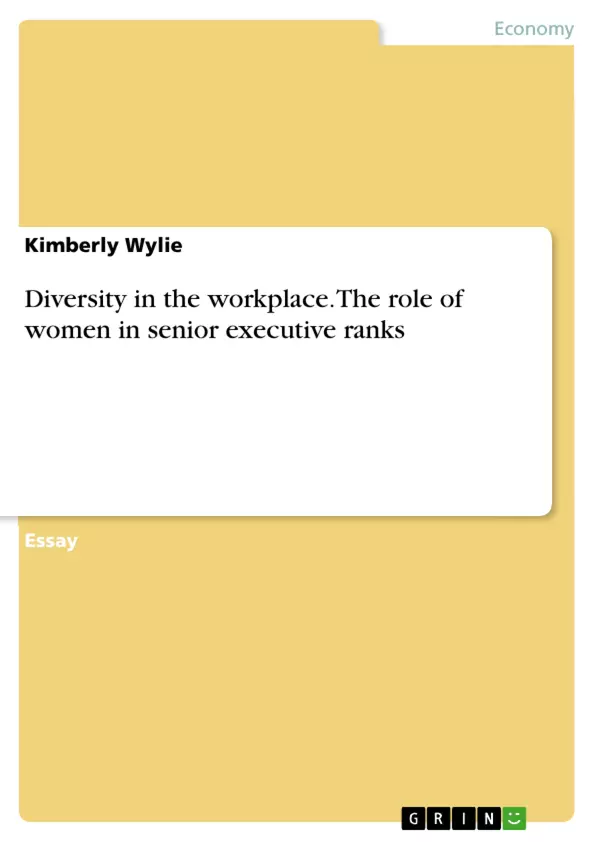With today’s growth in the economy and demand for talented employees, one would think that doors, as well as the glass ceiling, are figuratively being held open for women to walk on through. Progress is being made. Women are joining the top ranks of corporations in America, however, not at the pace many thought they would. In fact, despite the large numbers of women holding management positions, very few ever make it to executive status. (Wells, 2001a)
This paper will describe three of these factors that can impede women’s movement into the senior executive ranks. It will also discuss two ways how the presence and availability of other women in executive level positions contribute to upward mobility. And finally, this paper will present the criteria that should be utilized when promotions are being made.
Inhaltsverzeichnis (Table of Contents)
- Abstract
- Introduction:
- Diversity Management vs. Diversity Awareness:
- Diversity Awareness Program Implementation:
- Factors Affecting Diversity Awareness:
- Conclusion:
- References
Zielsetzung und Themenschwerpunkte (Objectives and Key Themes)
This text aims to explore the importance of diversity in the workplace and the role of human resource management in fostering a diverse and inclusive work environment. The text focuses on the implementation and effectiveness of diversity awareness programs within organizations.
- The importance of diversity in the workplace in today's globalized economy
- The distinction between diversity management and diversity awareness
- The implementation of diversity awareness programs, including program creation, implementation, and evaluation
- Factors that influence the effectiveness of diversity programs, particularly resistance to change and denial
- The potential competitive advantage for companies that successfully implement diversity programs
Zusammenfassung der Kapitel (Chapter Summaries)
- Abstract: This section introduces the topic of diversity in the workplace, highlighting the importance of diversity efforts in today's globalized economy and the role of human resource management in this area.
- Introduction: This chapter emphasizes the significance of diversity in the workplace, tracing its origins back to the Civil Rights Act of 1964. It argues that diversity is essential for success in today's globalized economy.
- Diversity Management vs. Diversity Awareness: This chapter defines and differentiates between diversity management and diversity awareness. Diversity management focuses on valuing and utilizing diverse skills and perspectives, while diversity awareness aims to cultivate a welcoming and inclusive work environment.
- Diversity Awareness Program Implementation: This chapter outlines the key steps involved in implementing a diversity awareness program. These steps include program creation, evaluation of existing programs, selecting a program, employee involvement, and program evaluation.
- Factors Affecting Diversity Awareness: This chapter explores the factors that can hinder the effectiveness of diversity programs. It discusses the common resistance to change and the tendency for some individuals to deny the importance of diversity initiatives.
Schlüsselwörter (Keywords)
The main keywords and focus topics of this text include diversity management, diversity awareness, human resource management, program implementation, program evaluation, resistance to change, and the competitive advantage of diverse workforces. This text explores the importance of creating inclusive and welcoming work environments, emphasizing the role of human resource management in driving successful diversity initiatives.
- Citation du texte
- Kimberly Wylie (Auteur), 2004, Diversity in the workplace. The role of women in senior executive ranks, Munich, GRIN Verlag, https://www.grin.com/document/84837



